The Alphabet of Civilization VI, or 10 most interesting changes introduced by sixth installment
Having spent 25 hours with the alpha version of Civilization VI, we’ve decided to prepare a short summary of the most important changes in the latest part of the cult cycle.
In April 1991, when the team at MicroProse with Sid Meier at the helm, full of pride, but also anxiety, launched the first installment of the Civilization series, the world looked different than it does today. The Soviet Union still existed, the multinational country that Yugoslavia was still had some years left before it was to disband, and Iraq was under the firm rule of Saddam Hussein. What changed over the next 25 years were not only borders (eastern Europe witnessed the creation of three new states for example), but also the strategy franchise itself, sporting richer visuals (in the first installment it took no more than 225 pixels to represent a single settler), introducing new gameplay mechanics or adding new nations for us to lead. As the old empires fell, and the video game industry developed as rapidly as probably no other industry so far, one thing remained the same – the great fun of building, exploring and conquering in Civilization. That's the famous One More Turn Syndrome that for years has compelled successive generations of players to stay in front of their monitors. In three weeks from now we will find out if the magic of the titles signed by Sid Meier is still working, and if the sixth installment in the series will succeed in winning our hearts and minds for hours to come.
Meanwhile, having spent 25 hours playing the trial version of the game, completing almost 1,000 turns, and checking out three different ways to achieve victory, we have prepared for you a list of 10 most interesting changes introduced to the franchise by Sid Meier's Civilization VI. We chose the ones that we like the most, but remember that these are not all novelties you can find in the sixth installment, as the game introduces a whole lot of them. So much for introduction, it's time to learn some alphabet.
Note – our alphabet has only 10 letters. As we did not want to bore you with small fry, we chose only the most interesting changes. The rest of them are for you to discover!
C is for casus belli
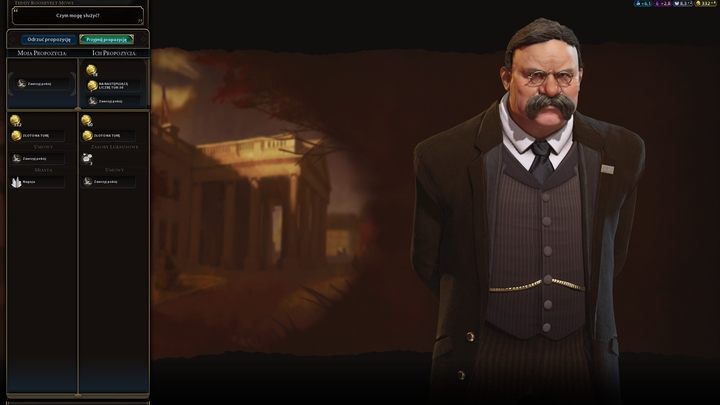
Let’s start with the letter "C", because why not? Aside from Civilization, the other equally famous and complex strategy game series would be Europa Universalis. The cycle from the Swedish studio Paradox is known for, among others, the complex, but also realistic diplomacy system, in which to declare war a state needs to have a good excuse (the Latin expression casus belli, lit. "a case of war") – otherwise it would pay dearly for unprovoked aggression. I'm glad that the creators of Sid Meier's Civilization VI have picked up on this idea and implemented it in their game. While not as complex as the original rendition, the very fact of enabling the player to avoid penalties for excessive belligerence deserves praise. And it can be achieved in various ways, discovered during the development of our civilization – there's no shortage of things like colonial wars or various pretexts of religious or even formal nature that give the enemy five turns to prepare.
The version of the game that was made available for testing allowed us to deal only with enemies on third level of difficulty. It is therefore hard for the moment to assess the aggressiveness of artificial intelligence in the sixth installment; what we do now, however, is that if we were the ones consistently ignoring the opinion of our neighbors and triggering war after war, other nations would fairly quickly recognize us as a threat to world peace and attack together, and successfully. In this aspect Civ VI makes a solid first impression.
E is for eureka moments
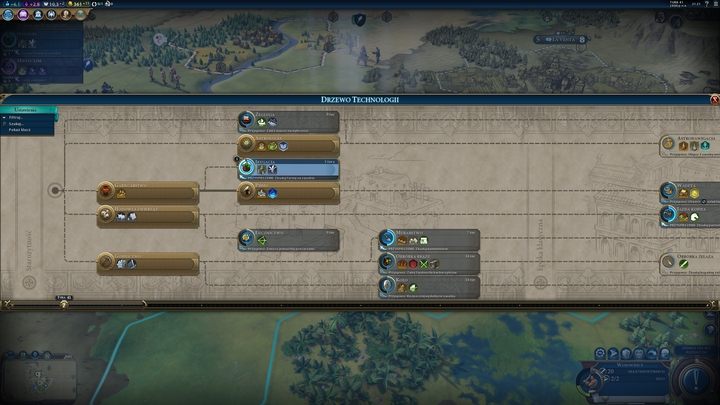
One of the most important changes introduced by Civilization VI is related to the system of discovering tech and ideas (see P is for policies). Surely many of you have already heard of the "eurekas", sometimes called – quite incorrectly – mini quests. Every scientific discovery can now be achieved faster by completing a goal associated with it: it may be a requirement of having recruited three archers, discovered another continent, or built a few mines. Eureka moments provide a huge bonus for science development (reducing the time it takes to research a tech by half!), making it wise to plan the goals associated with them in advance, as it is not always possible to achieve them at the last minute (and this aspect will be particularly important in online games).
While we’re on the subject of tech development, it is worth noting that the sixth installment has seen the reprise of the technology trees; if you prefer though, it can also take the form of its appearance from the fifth installment – a typical, ??less-than-clear list of available techs, which was criticized by many, and which was replaced in many mods with a much more intuitive tech tree. I’d say it is good that the devs don’t cling to each and every solution from the previous entries.
G is for great people
Some big changes had to affect great people. In the latest installment, just like in Civ V, we acquire them by collecting points. Various buildings or wonders allow faster acquisition of engineers, generals or musicians. Now, however, all civilizations are involved in a race for one particular genius of the past, a character with unique individual characteristics. For example, in the modern era there is the famous merchant Adam Smith, who allows the player to use an additional economic policy under any government system (see P is for policies). If we get to be first to amass the required number of points or use money or faith, we can win this great man, except... we do not have to. Perhaps we prefer another one instead, one who is next in line – then we simply refrain from recruiting Mr. Smith and wait for our man. As we already have the sufficient number of points to obtain him, we are likely to snag him before anyone else does.
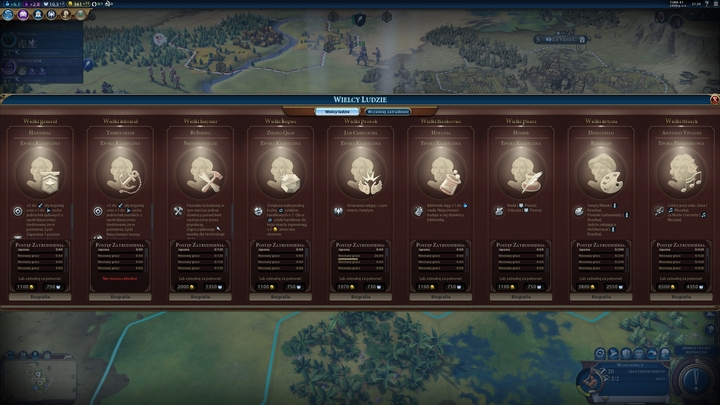
Having hit the 25 hour mark, I’ve noticed that I treated great men like assets, no matter what skills and abilities they had – in a word: whoever was there for the taking, I took them. This proves how complex the gameplay mechanics of Civilization VI are – to understand all of their nuances you will need to perfectly master both the secrets of town development (see T is for towns), and get to know the vast majority of great men appearing in the game as well as learn how to lay out the research path of techs and ideas (see P is for policies). The sixth Civilization promises to be a game whose various aspects you will be discovering with pleasure across dozens, if not hundreds, of hours.
M is for movement range
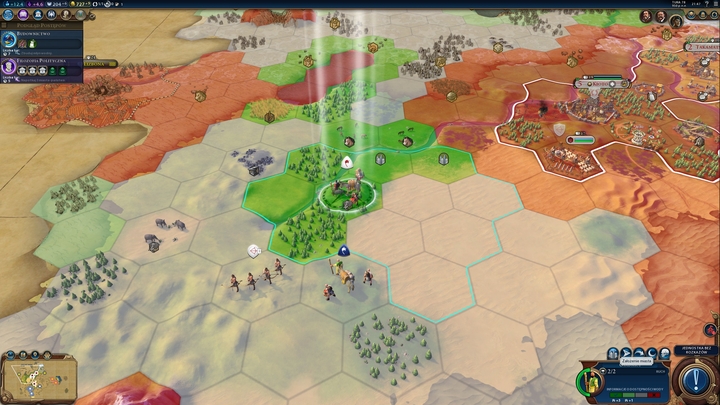
Sometimes a slight change can come with serious consequences. This is the case with unit movement in Civilization VI – in the previous installment, as long as our unit had at least a single movement point, it could enter any of the surrounding tiles, even if they were mountains or a jungle. To do so now, the unit must have at least as many points as you would usually need to climb the hills or cross the river. This may not sound like a big innovation, but in practice it means that defending your territory is easier, and troop transport across longer distances takes more time. The ones to benefit from this are, what should be obvious, ranged combat units that have no such restrictions in combat (they do when they move, though). It is also easier to escape from an enemy or a barbarian unit, as they – even if they stop right next to us – will often lack the points required to attack.
Vox Populi
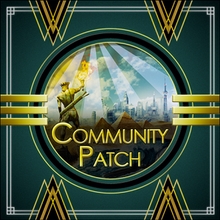
Vox populi (Lat.) – will of the people.
One of the best mods that have ever been developed for Civilization V was Vox Populi (also known as the Community Patch). The fan-created mod greatly expanded the game by adding new buildings and units, as well as improving artificial intelligence and rebalancing the gameplay. If you have yet to experience it, there's absolutely no reason to wait – it will be the perfect training in anticipation of Civ VI.
What is most pleasing, however, in the context of Civilization VI is the fact that Firaxis Games have looked at the work of modders, and then introduced some of the fans' original solutions to the game. And so the system of sending delegates to city-states (see N is for neutral city-states) or bonuses from adjacent farms (we get them by researching feudalism) are just a few of the solutions that seem to be inspired by the ideas of modders.
N is for neutral city-states
The devs from Firaxis promise they won’t be repeating the mistake from Civ V, namely skipping some of the content so that it can later become a DLC. We will get a complete game, containing the most important mechanics from the previous part. Indeed, the religion, tourism, and archeology systems are all here. It doesn’t mean that the developers didn’t leave any room for expansion – my guess is that one of the DLCs will expand diplomacy mechanics; the world congress is nowhere to be found, hence the city-states’ role is completely different.
In Civilization VI influence points are no longer collected in neutral states; instead, the players dispatch special delegates. They, in turn, provide very specific bonuses that are divided into three tiers (one, three, or six delegates): having three delegates more than the next civilization in the given city-state makes it the player’s vassal, ensuring additional profits, such as the ability to hire the state’s army for 30 turns. I have to admit I dig the idea: it’s simpler than the system in V, but not oversimplified, and it leaves a lot of room to maneuver – both for the developers, in case of the aforementioned DLCs, and for modders as well.
P is for policies
One of the major changes, just after sending districts outside the city walls (see T is for towns), is the separate development tree for ideas, which has a similar function as the tech tree. Ideas are now gained, quite obviously, through culture points, but we are not as limited as in Civ V, where we could only choose a specific mini-tree (tradition, freedom, honor, etc.). This time we go through the entire human history, starting with legal codes, through feudalism and colonialism, and ending with modern social media. Discovering a specific idea adds a few policy cards and the option to change the political system of our country.
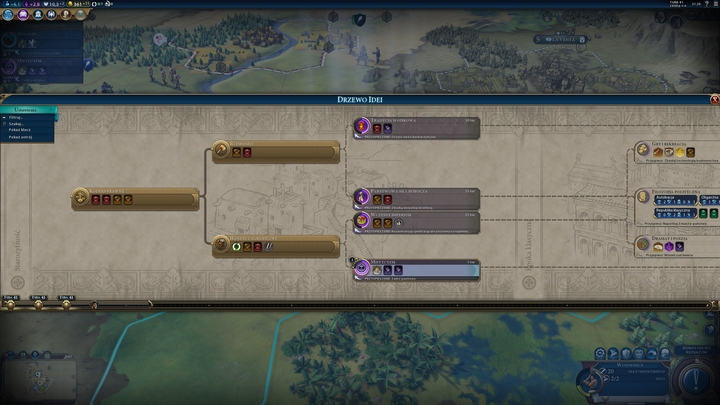
And here comes another novelty, which is the extremely flexible system of governments, through which we rule our nation. Each of the nine predefined regimes (oligarchy, monarchy, democracy, etc.) provides different benefits (e.g. the merchant republic increases by two the number of our trade routes), and also allows us to select a certain number of policy cards, representing doctrines that are active at the given time. Those are divided into four types (military, diplomatic, economic and other).
Every few turns, a dozen tops (and if we are in a tight spot we can simply pay, without having to wait for the discovery of the next idea) we are able to replace all of our policy cards, which provide various bonuses: from reducing the cost of producing a settler, to a several-fold increase in the number of tourism points generated by musical works. This allows us to easily switch to a playing style that is required at any given time. I'm still getting to know this system and I must confess that, just like some other fundamental changes in the game, I really like it. It is a seemingly simple and intuitive mechanic, but reaching a deep understanding of its works requires many, many hours of fun. And that's how it should be in a Civilization game!
Flexibility of policies in practice
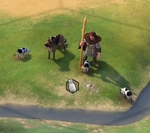
The case is as follows: after the first dozen or so rounds we realize that in our neighborhood there are three barbarian villages, and their units are wreaking havoc in the area. As soon as we get the opportunity, we choose policy cards that give us bonuses against them, as well as those accelerating unit production. Having successfully cleared the field of the troublemakers, we can then quickly replace the policies to support the production of settlers and workers.
R is for roads
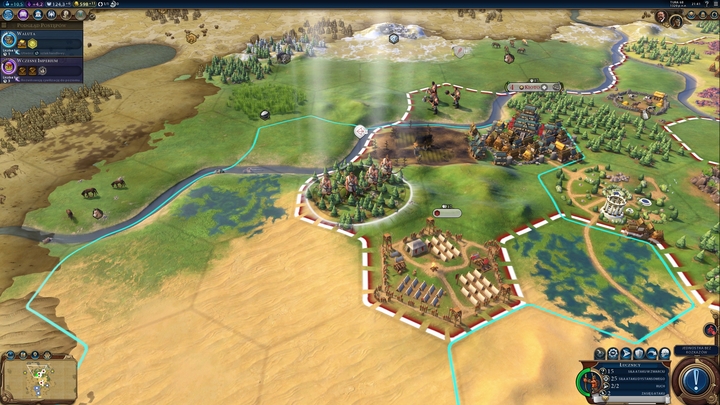
Civilization VI, for the first time in the history of the series, doesn't allows us to build roads. More specifically – we can’t do this manually, since routes appear automatically, as if by themselves. So, if designing an extensive transportation network was your hobby, this time unfortunately, you will have to do without.
In practice, the roads are what is left after we send caravans to neighboring towns. Our merchant pioneers the route, moving one tile per turn, but in return he leaves a path in his wake, which, as the technological development progresses, becomes first a decent road, and eventually a highway. Due to this change, I first sent caravans to my own cities, even if it yielded smaller profits than trade with other civilizations – I wonder how others will play, and which strategy will turn out to be the most profitable in the long run.
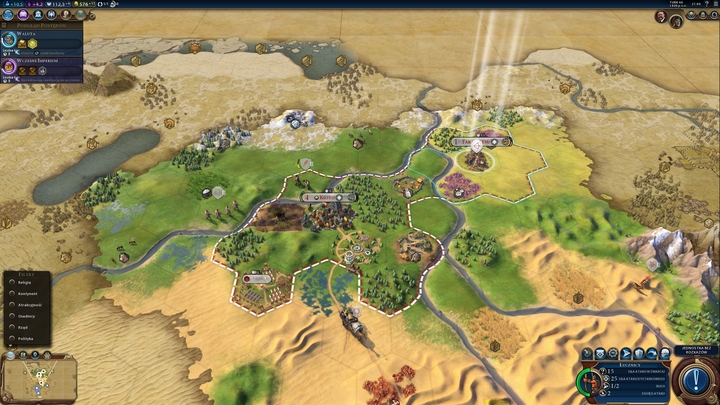
What's more, the roads work differently than in the previous installment. Now, no matter on whose territory the route is located, it provides a movement bonus to the units using it. This means that when attacking an enemy we can use their transportation network – the defender still has a more advantageous situation, e.g. due to garrisons (see T is for towns) or faster transport of his or her troops, but warfare has now become much more dynamic.
T is for towns
And so we reach the creme de la creme of Civilization VI. For the first time in the history of the franchise towns no longer occupy only one tile – wonders and districts are built beyond the city center, and that is where the majority of buildings is located. The authors' strong emphasis on the change in this aspect (the fact was even highlighted in the advertising campaign) is not without reason, as it implies enormous consequences. But let's start from the beginning.
With the development of our civilization we unlock additional districts that we can place on the tiles surrounding our city center. They act as local focal points for specific fields of activity of a city – the religious district generates faith, Campus (the scientific district) provides bonus to science, and so on. This is where we place other buildings, such as churches, universities, or theaters, and they all appear on the map (see V is for visuals). It might seem a merely cosmetic change, but it’s quite the contrary. First of all, we are unable to place every district around a single city, so no city will have a complete set of all buildings – you need to decide early on what main function your city will serve and focus its development in that direction. It also involves the fact that the location of districts affects their effectiveness – for example, a scientific district gets extra points for its adjacency to a mountain range, and an industrial district should be placed near mines or quarries. As a result – and in combination with a different than before role of the workers (see W is for workers) – urban planning proves to be a much more complex and complicated process. After 25 hours of playing I was still learning those mechanisms, and that is a good sign for the future. It will take some time for Civilization VI to get boring.
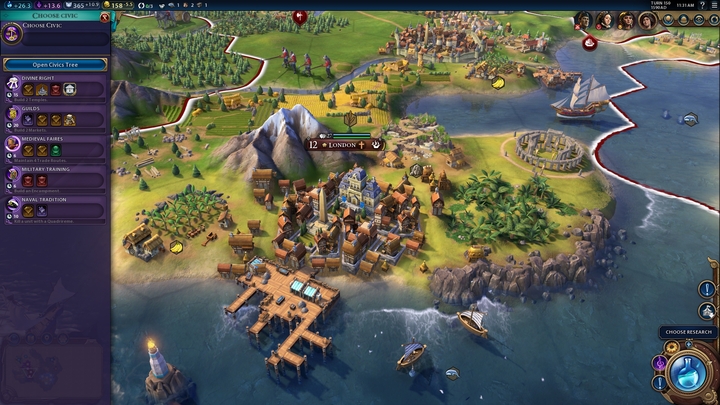
Military and maritime districts
Those two districts are worth a separate mention. But first, an observation: in Civ VI a town will no longer attack the enemy by itself – you will first need to build walls. That's a small change. More important is the role of encampments, which can be situated near our town. That's where our new units will appear, and that's also where we will build barracks and other buildings for military use. This sort of militarized district can also engage the enemy, so its location is of significant tactical importance, because, for example, by using natural obstacles, such as rivers or mountains, we are able to significantly bolster the town’s defenses.
Harbor, in turn, allows us to build ships even in a town located several tiles from water. This change seems to be particularly important in the context of urban development, because there is no longer any need to place towns strictly at the coastline. Which, as a result, leaves us with more tiles around our town to build other districts crucial to our whole civilization.
Happiness
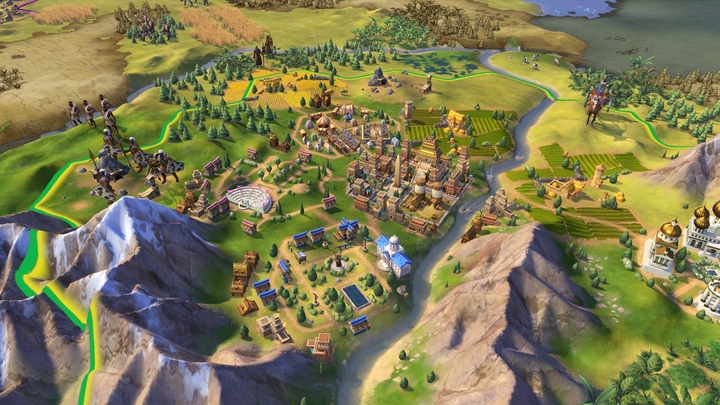
At the end of the paragraph concerning changes to the cities I would also like to mention happiness. The sixth installment abandons a nationwide happiness factor in favor of sending it back to individual cities. Now we must ensure that our towns and hamlets have the right amount of happiness generating facilities. Nothing stands in the way, however, not to care the slightest for the denizens' happiness, and have a town full of protesting crowds – while it may lead to a rebellion, it does not affect the development of our civilization as a whole. This change fits quite well with the emphasis that the creators have put in the latest installment to have the player establish a larger number of cities.
V is for visuals
The visuals of Civilization VI are excellent! In terms of refinement and level of detail the game definitely beats the previous installments, allowing us to safely say that this will be the most beautiful part of the series. Don’t be fooled by opinions accusing the visuals of being "cartoonish" or "mobile-like" – firstly, it's the opinion of a minority, as evidenced by a survey on Reddit, secondly, they are simply not, and thirdly, this is not a departure from the seriousness of the series as much as a return to tradition. Anyone who remembers the leaders appearing in the third Civilization, knows what I mean – they were even more exaggerated and comical than now.

For the first time in the Civilization series (and my adventure with the franchise began back in the 90s with the iconic first part) I felt that my actions affect the surrounding flora and fauna. The city and surrounding areas look vastly different in the Middle Ages, when not all tiles have yet been upgraded by the workers, and the districts (see T is for towns) are still under construction, and completely different in modern times, when one fragment of the tiles is occupied by wonders, others are full of residential neighborhoods, and part of the natural resources had to give way to, e.g. the home base of our space program. The real possibility of shaping the landscape provides tons of fun.
One of the weaknesses of Civ V was the low legibility of the map, especially in the later stages of the game. You can see that the devs at Firaxis have decided to tackle this problem, because now things are actually looking better. While it's still not perfect, who knows – maybe perfection can’t be achieved in as broad a game as Civilization. Currently each district has its own color (scientific – blue, military – red, religious – white, etc.) and those colors are associated with scientific discoveries and policy cards (see P is for policies). This allows a neat, clear system, and after some time, though I have to warn you – it really will take some time, the players learn to quickly evaluate enemy cities based on the colors of their districts; it also makes our civilization look a lot more orderly and organized.
Fog of war
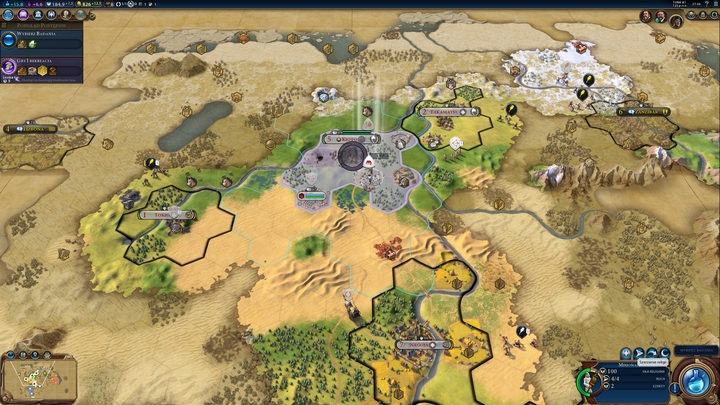
Sid Meier's Civilization VI introduces what is perhaps the most beautiful fog of war I have ever seen in a video game. Usually a fog of war darkens the section of the map which we can not see at a given moment. Instead, the sixth installment introduces an old map, which just looks completely wicked. This is yet another proof of how much work had to be put into the game's details, as they are polished in every aspect. The districts look fantastic and you can see every single building in them. Wonders are miniature gems and an indisputable joy to look at. Yet another pleasant point is the sophisticated interface, especially after the bland performance of the fifth installment in that matter.
W is for workers
In the first Civilization games farms, mines and roads were built by settlers. Then their duties were taken over by specialized workers, and their automated work let the player forget about tedious upgrading of tiles surrounding the city. Personally, I regretted this change because I appreciated the precision that came with the original way things were done. In Civilization VI we’re going back to the old days in a sense.
The work is still done by workers, but the new game has given them a new name – they are now called builders. This time they have a limited number of charges and once these are used up we have to create another unit. At first, we can use our builders three times, but the number goes up as we progress and build more wonders. This change, along with the fact that roads are created automatically (see R is for roads), means that taking care of a city’s development requires way more attention on our side – but not so much as to make it tiresome. Even when I simultaneously oversaw the development of as many as ten cities I didn’t feel overwhelmed with worker micromanagement, and that’s because they simply disappeared at some point. It’s hard to assess this solution at such an early stage, but having played Civ VI for 25 hours I can say it’s looking good.
